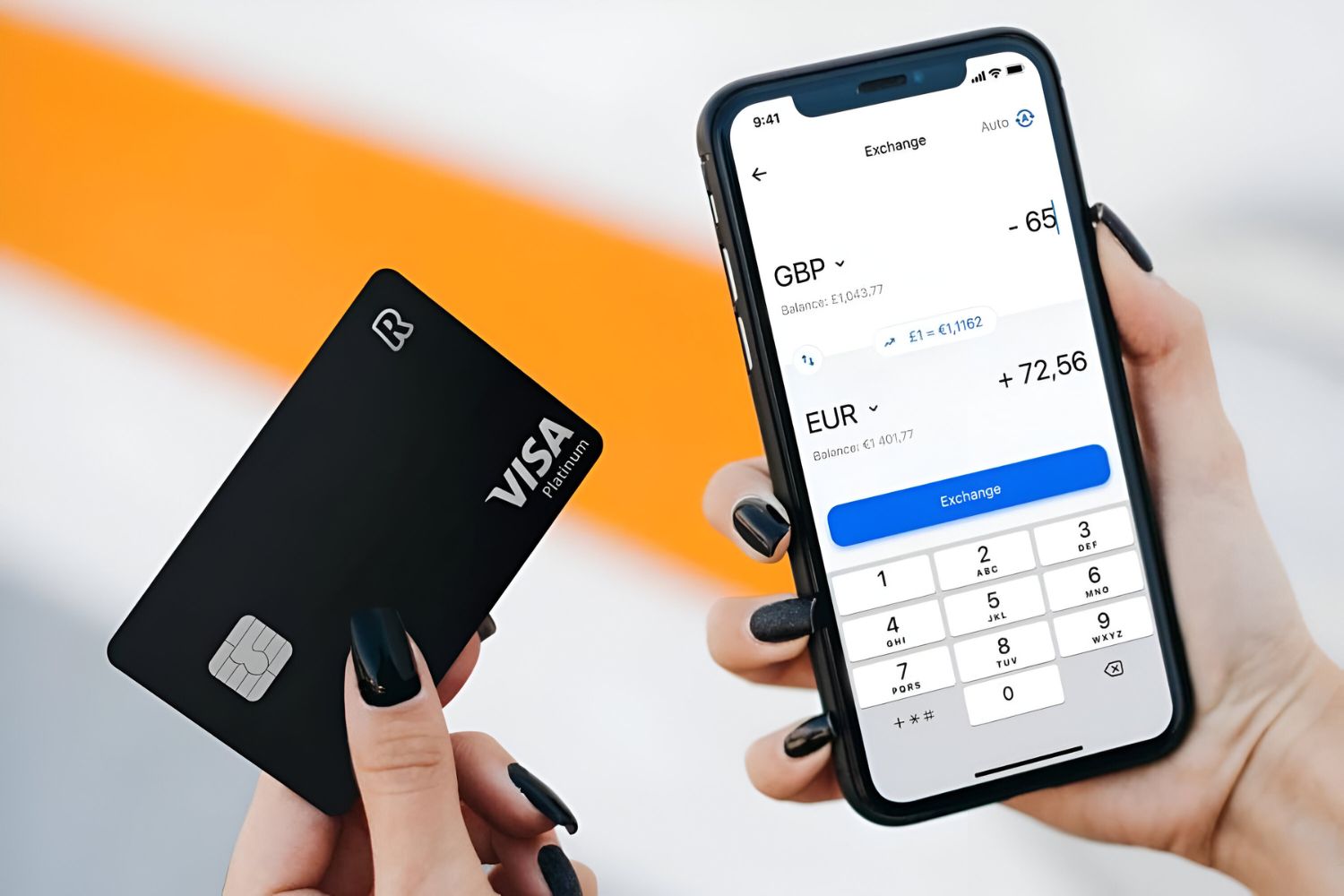Introduction
Interested in getting a crypto wallet but not sure where to start? Look no further! In this article, we will guide you through the process of getting a crypto wallet from start to finish. Whether you’re new to the world of cryptocurrencies or a seasoned investor, having a reliable and secure wallet is essential for managing your digital assets.
A crypto wallet is a software or hardware device that allows you to securely store and interact with your cryptocurrencies. It functions similarly to a traditional wallet, but instead of holding physical cash and cards, it stores your digital coins and tokens. With a crypto wallet, you can send, receive, and manage your digital assets with ease.
There are several types of crypto wallets available, each with its own unique features and security measures. The most common types include software wallets, hardware wallets, paper wallets, and online wallets. Choosing the right type of wallet depends on your specific needs and preferences.
In this article, we will explore these different types of wallets in more detail, discuss how to choose the right one for you, and guide you through the steps of setting up various types of wallets. By the end of this article, you’ll feel confident in your ability to obtain and use a crypto wallet to securely store and manage your digital assets.
What is a Crypto Wallet?
A crypto wallet, also known as a cryptocurrency wallet, is a software or hardware device that allows users to securely store and interact with their cryptocurrencies. It acts as a virtual wallet that holds your digital coins and tokens, enabling you to send, receive, and manage your digital assets.
Think of a crypto wallet as a digital bank account. It provides you with a unique address or a combination of keys that are used to access and control your cryptocurrencies. This address is similar to a bank account number, and the keys work as passwords to authorize transactions.
Crypto wallets are designed to ensure the safety and security of your digital assets. They use advanced encryption techniques and secure protocols to protect against hacks and unauthorized access. With a crypto wallet, you have full control over your funds, eliminating the need for intermediaries like banks or payment processors.
Each cryptocurrency typically has its own compatible wallet. For example, if you own Bitcoin, you will need a Bitcoin wallet to store and manage your Bitcoins. However, there are also multi-currency wallets available that support a wide range of cryptocurrencies, allowing you to store different types of coins in one place.
It’s important to note that crypto wallets do not store the actual cryptocurrencies themselves. Instead, they store the private keys that give you access to your funds. Your cryptocurrencies are stored on the blockchain, which is a decentralized and distributed ledger that records all transactions for a particular cryptocurrency.
When you want to send or receive cryptocurrencies, your wallet interacts with the blockchain to validate and record the transactions. This enables you to keep track of your balances, view transaction history, and manage your digital assets with ease.
Overall, a crypto wallet is an essential tool for anyone looking to own and transact with cryptocurrencies. It gives you full control over your funds, ensures the security of your digital assets, and allows you to engage in the exciting world of decentralized finance.
Types of Crypto Wallets
There are several types of crypto wallets available, each offering unique features and levels of security. Understanding the different types will help you choose the one that best fits your needs. Let’s explore the most common types of crypto wallets:
- Software Wallets: Software wallets, also known as digital wallets, are applications installed on your computer or smartphone. They offer convenience and accessibility as you can easily access your cryptocurrencies through the software. Software wallets can be further divided into:
- Desktop Wallets: These wallets are installed on your computer and provide high security as they are not connected to the internet. Examples include Exodus, Electrum, and Atomic Wallet.
- Mobile Wallets: Designed for smartphones, these wallets offer ease of use and portability. They are suitable for everyday transactions. Popular mobile wallet options include Trust Wallet, Mycelium, and Coinbase Wallet.
- Hardware Wallets: Hardware wallets are physical devices designed to securely store your cryptocurrency offline. They provide the highest level of security by keeping your private keys offline, away from potential threats. Examples of hardware wallets include Ledger Nano S, Trezor, and KeepKey.
- Paper Wallets: A paper wallet involves generating and printing your private and public keys on a piece of paper. It’s a secure method of storing cryptocurrencies offline. Paper wallets are not as user-friendly as other options and require caution to ensure the safekeeping of the physical copy.
- Online Wallets: Also known as web wallets, online wallets are hosted on remote servers and access to your cryptocurrencies is provided through a web browser. They offer convenience and accessibility, but as they store your private keys on a third-party server, they are considered less secure. Examples of online wallets include Coinbase, Blockchain.com, and Binance.
It’s important to evaluate your security needs and preferences when choosing a crypto wallet. Hardware wallets are generally considered the most secure option as they keep your private keys offline. However, software wallets provide convenience and accessibility, especially for frequent transactions. Paper wallets are suitable for long-term storage but require extra precautions to protect the physical copy. Online wallets offer easy access but keep in mind the potential security risks associated with storing your private keys online.
By understanding the different types of crypto wallets available, you can make an informed decision and select a wallet that aligns with your security, accessibility, and usability preferences.
Software Wallets
Software wallets, also known as digital wallets, are applications that can be installed on your computer or smartphone. They provide a convenient way to store and manage your cryptocurrencies, offering easy accessibility and a user-friendly interface. Software wallets come in different forms, including desktop wallets and mobile wallets.
Desktop Wallets: Desktop wallets are software applications that you can install on your computer. They provide a high level of security as they store your private keys locally. Desktop wallets are typically encrypted, requiring you to set a strong password to access your funds. Examples of popular desktop wallets include Exodus, Electrum, and Atomic Wallet.
With desktop wallets, you have full control over your private keys, keeping them stored securely on your own computer. However, it’s important to ensure that your computer is free from malware and viruses that could potentially compromise the security of your wallet.
Mobile Wallets: Mobile wallets are designed for smartphones and offer the convenience of accessing your cryptocurrencies on the go. They are user-friendly, allowing you to easily send, receive, and manage your digital assets. Mobile wallets often have additional features, such as QR code scanning for easy transaction initiation.
Popular mobile wallet options include Trust Wallet, Mycelium, and Coinbase Wallet. These wallets provide a secure and convenient way to access your cryptocurrencies from your mobile device. However, it’s important to keep your device protected with strong passwords and enable additional security features, such as biometrics or two-factor authentication.
Software wallets, whether desktop or mobile, require an internet connection to interact with the blockchain and validate transactions. They are suitable for everyday use and are a popular choice for individuals who frequently engage in cryptocurrency transactions.
When choosing a software wallet, it’s essential to consider factors such as security features, user interface, compatibility with the cryptocurrencies you own, and community support. It’s recommended to do thorough research and read reviews before selecting a software wallet to ensure its reliability and security.
Remember to regularly update your software wallets with the latest security patches and backup your wallet’s private keys in a safe and secure location to prevent loss of funds. By choosing a reputable software wallet and following best practices for security, you can enjoy the convenience and accessibility of managing your cryptocurrencies through a digital wallet.
Hardware Wallets
When it comes to maximum security for storing your cryptocurrencies, hardware wallets are considered the gold standard. Hardware wallets are physical devices specifically designed to securely store your private keys offline, away from potential online threats.
A hardware wallet operates similarly to a USB device and is connected to your computer or smartphone when you need to manage your cryptocurrencies. The private keys are stored on the device itself and are never exposed to the internet or the computer you connect it to. This significantly reduces the risk of private key theft or unauthorized access.
One of the benefits of using a hardware wallet is that it offers a high level of security even on potentially compromised computers. The device is designed in such a way that it performs all the necessary cryptographic operations internally, ensuring that the private keys never leave the device’s secure environment.
Popular hardware wallet options include Ledger Nano S, Trezor, and KeepKey. These wallets support a wide range of cryptocurrencies and provide easy-to-use interfaces for managing your digital assets.
Using a hardware wallet is straightforward. After setting up the device, you’ll be guided through the process of generating a seed phrase, which acts as a backup in case your hardware wallet is lost or damaged. The seed phrase should be stored securely offline and kept away from prying eyes.
When conducting transactions, the hardware wallet will prompt you to confirm the transaction details on its screen. You’ll need to physically press a button on the device to authorize the transaction, providing an additional layer of security against any malicious activity.
Hardware wallets are ideal for individuals holding significant amounts of cryptocurrencies or those who prioritize the highest level of security for their digital assets. They are especially beneficial for long-term storage or “HODLing” crypto investments.
However, it’s important to note that hardware wallets come at a cost, and the physical device can be lost or damaged. Therefore, it’s crucial to keep your hardware wallet in a safe and secure place, have proper backups of your seed phrase, and follow the manufacturer’s instructions for maintenance and firmware updates.
If security is your top priority, investing in a hardware wallet is highly recommended. It offers peace of mind, knowing that your private keys are stored in a secure offline environment, shielding your digital assets from potential online vulnerabilities.
Paper Wallets
For individuals who prioritize offline storage and maximum security, paper wallets provide an effective way to store their cryptocurrencies. A paper wallet involves generating and printing your private and public keys on a physical piece of paper.
The process of creating a paper wallet starts by using a reliable offline or air-gapped computer to generate a unique set of private and public keys. These keys are then printed on a paper or written down manually. It’s crucial to keep this physical copy well-protected and away from prying eyes.
One of the advantages of a paper wallet is that it provides an offline storage solution, keeping your private keys completely isolated from online threats. Since the private key is never exposed to the internet or stored on any device, the risk of unauthorized access is significantly minimized.
When you want to access your cryptocurrencies stored in a paper wallet, you’ll need to import the private key into a compatible wallet application. This process involves using a software wallet or an online wallet that allows the import of private keys.
It’s important to note that while paper wallets offer excellent security, they require careful handling and proper storage. The physical copy must be kept in a secure location, protected from fire, water damage, or theft. Additionally, it is strongly advised to create multiple copies of the paper wallet to serve as backups, stored in separate secure locations.
When using paper wallets, it’s crucial to be aware of potential pitfalls. One such pitfall is the risk of losing the physical copy of the wallet. Unlike digital wallets or hardware wallets, there is no way to retrieve the funds if the paper wallet is lost or destroyed without proper backups.
Another important consideration when using paper wallets is the need for caution while generating and printing the keys. Ensuring the computer used for the generation process is secure, free from malware and keyloggers, is essential to protect against potential compromises.
While paper wallets offer an offline storage solution for cryptocurrencies, they are generally considered less user-friendly than other wallet options. They require a certain level of technical knowledge and diligence to ensure proper setup and storage.
Overall, paper wallets provide an excellent way to securely store your cryptocurrencies offline, away from potential online threats. However, they require careful handling, proper backups, and a thorough understanding of their limitations. If security and control over your private keys are your top priorities, paper wallets can be an effective option for safeguarding your digital assets.
Online Wallets
Online wallets, also known as web wallets, are wallet services that allow you to store and manage your cryptocurrencies through a web browser. They offer convenience and accessibility, allowing you to access your funds from any device with an internet connection.
When using an online wallet, your private keys are stored on a remote server operated by the wallet provider. This means you don’t have direct control over your keys, and you are relying on the security measures implemented by the wallet service. It is important to choose a reputable and trusted online wallet provider to ensure the security of your digital assets.
Online wallets offer several advantages, including easy setup, user-friendly interfaces, and seamless integration with cryptocurrency exchanges. They are a popular choice for individuals who need regular access to their cryptocurrencies for frequent transactions.
Some popular online wallet options include Coinbase, Blockchain.com, and Binance. These platforms are known for their robust security measures, multi-currency support, and additional features such as integrated exchange services and portfolio management tools.
While online wallets offer convenience, it’s important to be aware of the potential security risks associated with them. Storing your private keys on a remote server means you are susceptible to hacking attempts and potential breaches of the wallet provider’s infrastructure.
To enhance the security of your online wallet, it is recommended to follow best practices such as using strong, unique passwords, enabling two-factor authentication (2FA), and keeping your devices and browsers updated with the latest security patches.
Additionally, keeping only a limited amount of funds in your online wallet for everyday transactions and storing the majority of your cryptocurrencies in a hardware wallet or offline storage solution can further mitigate the risks associated with online wallets.
Overall, online wallets provide a convenient way to manage your cryptocurrencies and are suitable for individuals who prioritize accessibility and ease of use. However, it’s important to remain vigilant and take the necessary precautions to protect your digital assets when using online wallet services.
How to Choose a Crypto Wallet
With numerous crypto wallet options available, choosing the right one for your needs can seem overwhelming. However, by considering a few key factors, you can make an informed decision. Here are some important considerations when choosing a crypto wallet:
- Security: The security of your digital assets should be a top priority. Look for wallets that offer robust security features such as encryption, two-factor authentication (2FA), and biometric authentication if available. Consider the type of wallet that aligns with your security needs, whether it’s a hardware wallet for maximum security or a software wallet with strong encryption.
- Compatibility: Ensure that the wallet supports the cryptocurrencies you own or plan to invest in. Different wallets may have varying levels of compatibility with different coins and tokens. Check the wallet’s website or documentation to see which cryptocurrencies are supported.
- User-Friendliness: Consider the user interface and overall user experience of the wallet. A wallet with an intuitive interface and easy-to-navigate features can simplify the process of managing your cryptocurrencies, especially if you are new to the world of digital assets.
- Reputation and Trustworthiness: Research the wallet provider’s reputation and track record. Look for wallets that have been in the market for a considerable amount of time and have a large user base. Read user reviews and check forums for any potential red flags or security concerns raised by other users.
- Development and Support: Check if the wallet is actively developed and supported by a dedicated team. Regular updates and bug fixes are indicators of a well-maintained wallet. Active development also ensures that the wallet keeps up with industry standards and addresses any potential security vulnerabilities.
- Backup and Recovery: Consider the backup and recovery options offered by the wallet. A good wallet should provide a secure and convenient way to create backups of your private keys or seed phrase. This ensures that you can recover your funds in case of loss, damage, or theft of your wallet.
Every individual’s needs and preferences are unique, so it’s important to evaluate these factors based on your specific requirements. Consider the level of security, ease of use, and compatibility that aligns with your crypto storage and management goals.
Remember, you are in control of your funds, so take the time to research and choose a wallet that provides the best combination of security, convenience, and user experience for your cryptocurrency journey.
Steps to Get a Crypto Wallet
If you’re ready to get started with a crypto wallet, follow these steps to set up your wallet and start securely managing your digital assets:
- Research: Begin by researching the different types of wallets available and their features. Consider your security needs, user experience preferences, and the cryptocurrencies you plan to store. This research will help you narrow down your options and choose the wallet that best suits your requirements.
- Create a Wallet: Once you’ve selected a wallet, visit the wallet provider’s website to create an account. Follow the registration process, providing any necessary information such as your email address and password.
- Secure Your Account: Enable any additional security features offered by the wallet, such as two-factor authentication (2FA). This adds an extra layer of protection to your account and helps prevent unauthorized access.
- Choose a Wallet Type: Select the type of wallet you want to use, such as a software wallet, hardware wallet, paper wallet, or online wallet. Consider factors such as security, accessibility, and your comfort level with handling private keys.
- Set Up the Wallet: Follow the specific instructions provided by the wallet provider to set up your chosen wallet. This may involve installing software on your computer or downloading a mobile app. Generate your private keys or seed phrase as instructed and make sure to store it securely.
- Backup Your Wallet: Create a backup of your private keys or seed phrase. This backup is crucial in case you lose access to your wallet or your device is damaged. It’s recommended to make multiple copies and store them in separate secure locations.
- Test the Wallet: Before transferring a large amount of funds, conduct a small test transaction to ensure that your wallet is functioning correctly. This will give you the confidence that your wallet is set up properly and can send and receive cryptocurrencies.
- Secure Your Device: If you’re using a software wallet, make sure your device is protected from malware and viruses. Use up-to-date antivirus software and be cautious when installing unknown applications or clicking on suspicious links.
- Keep Your Wallet Updated: Regularly check for updates to your wallet’s software or firmware. These updates often include important security patches that help protect your funds from potential vulnerabilities.
Remember, the process of obtaining a crypto wallet may vary slightly depending on the wallet provider and the type of wallet you choose. Make sure to follow the specific instructions provided by the wallet provider to ensure a smooth setup process.
By following these steps, you’ll be well on your way to securely managing your cryptocurrencies and participating in the exciting world of decentralized finance.
Set Up a Software Wallet
A software wallet is a popular choice for managing cryptocurrencies due to its convenience and accessibility. Follow these steps to set up a software wallet:
- Select a Software Wallet: Choose a software wallet that suits your needs and download the application from the wallet provider’s official website or authorized app store. Popular software wallets include Exodus, Electrum, and Atomic Wallet.
- Install the Wallet: Once you’ve downloaded the software wallet, follow the installation instructions provided. Make sure to download the official version from a trusted source to avoid any potential malware or fraudulent applications.
- Create a New Wallet: Open the software wallet and select the option to create a new wallet. You may be prompted to set a strong password to secure your wallet. It’s recommended to use a unique and complex password to enhance the security of your funds.
- Write Down or Backup Your Seed Phrase: The wallet will generate a seed phrase, which is a series of words that act as a backup for your wallet. Write down the seed phrase and store it securely offline. This will serve as a backup to restore your wallet in case you lose access to your device.
- Validate Your Seed Phrase: Some wallets require you to validate your seed phrase by selecting words from the list in the correct order. This step ensures that you have correctly recorded the seed phrase and helps prevent potential mistakes.
- Access Your Wallet Dashboard: Once your wallet is set up, you will be directed to the wallet dashboard. Here, you can view your balances, transaction history, and manage your cryptocurrencies.
- Receive and Send Cryptocurrencies: To receive cryptocurrencies, provide your wallet’s public address to the sender. The coins will be sent to your wallet, and the transaction will be recorded on the blockchain. To send cryptocurrencies, enter the recipient’s address and the desired amount in the wallet’s send function.
- Enable Additional Security: Explore the settings of your software wallet to enable additional security features such as two-factor authentication (2FA) or biometric authentication if available. These extra layers of security can provide added protection for your wallet and funds.
- Keep Your Software Wallet Updated: Regularly check for software updates for your chosen wallet. Updates often include security improvements and bug fixes, so it’s important to keep your wallet up to date to ensure the safety of your cryptocurrencies.
Remember to exercise caution when using a software wallet. Keep your computer or mobile device free from malware and avoid clicking on suspicious links or downloading files from untrusted sources. By following these steps and best practices, you can securely manage your cryptocurrencies using a software wallet.
Set Up a Hardware Wallet
Setting up a hardware wallet provides an excellent level of security for your cryptocurrencies. Follow these steps to set up a hardware wallet:
- Select a Hardware Wallet: Choose a hardware wallet that suits your needs and purchase it from a trusted source. Popular hardware wallets include Ledger Nano S, Trezor, and KeepKey.
- Unbox and Connect the Device: Unbox your hardware wallet and connect it to your computer or smartphone using the provided USB cable. Some wallets may have wireless capabilities for connecting via Bluetooth.
- Initialize the Hardware Wallet: Power on the hardware wallet and follow the on-screen instructions. You may be prompted to set a PIN code or create a passphrase for added security. Make sure to choose a strong and unique PIN or passphrase.
- Write Down Your Recovery Seed: During the setup process, the hardware wallet will generate a recovery seed, which is a series of words that serve as a backup for your wallet. Write down the seed and store it securely offline. This seed is essential for restoring your wallet if your device is lost, damaged, or stolen.
- Verify Your Recovery Seed: Some hardware wallets require you to verify your recovery seed by selecting specific words from the list in the correct order. This step helps ensure that you have accurately recorded your seed phrase and prevents any potential mistakes.
- Set a Secure PIN: After confirming your recovery seed, set a secure PIN code for accessing your hardware wallet. The PIN code acts as an additional layer of security, preventing unauthorized access to your funds in case your device is lost or stolen.
- Install Wallet Software (If Applicable): Depending on the hardware wallet, you may need to install specific software provided by the wallet manufacturer. Follow the instructions to install the required software on your computer or smartphone.
- Create Accounts: Once your hardware wallet is set up and connected, you may need to create different cryptocurrency accounts within the wallet. Follow the instructions provided by the wallet’s software to add accounts for the cryptocurrencies you own.
- Receive and Send Cryptocurrencies: To receive cryptocurrencies, provide the sender with your wallet’s public address. The coins will be sent to your hardware wallet, and the transaction will be recorded on the blockchain. To send cryptocurrencies, initiate the transaction through the wallet’s software and approve it on the hardware device.
- Keep Your Hardware Wallet Updated: Regularly check for firmware updates for your hardware wallet. These updates often include important security enhancements and bug fixes, so it’s crucial to keep your device up to date to ensure the protection of your cryptocurrencies.
Remember to keep your hardware wallet in a safe and secure location when not in use. Avoid exposing it to extreme temperatures, water, or physical damage. By following these steps and best practices, you can set up and utilize a hardware wallet to securely store and manage your cryptocurrencies.
Create a Paper Wallet
A paper wallet offers an offline storage solution for your cryptocurrencies. Creating a paper wallet involves generating and printing your private and public keys on a physical piece of paper. Follow these steps to create a paper wallet:
- Choose a Reputable Paper Wallet Generator: Select a reputable paper wallet generator from a trusted source. Make sure it is an open-source tool that has been audited for security.
- Disconnect from the Internet: For maximum security, use an offline or air-gapped computer that is not connected to the internet. This minimizes the risk of potential malware or keyloggers compromising your private keys.
- Access the Paper Wallet Generator: Visit the website of the chosen paper wallet generator using your offline computer. Follow the instructions provided to access the generator and initiate the process.
- Generate Your Keys: The paper wallet generator will guide you through the process of generating a pair of private and public keys. The private key is kept secret and should never be shared, while the public key is used to receive funds.
- Print or Write Down the Keys: Once the keys are generated, you have the option to print them directly from the generator or write them down on a piece of paper. Ensure that the printing or handwriting is clear and easily readable.
- Consider Multiple Copies: It’s recommended to create multiple copies of your paper wallet in case of loss, damage, or theft. Ensure each copy is stored securely in separate, safe locations.
- Encrypt the Private Key (Optional): For added security, consider encrypting the private key with a password or passphrase before printing or writing it down. This provides an extra layer of protection if your paper wallet falls into the wrong hands.
- Securely Store the Paper Wallet: Treat your paper wallet like cash. Store it in a safe and secure place, protected from fire, water damage, and prying eyes. Consider using a waterproof and fire-resistant container for added protection.
- Check the Balance: To verify that your paper wallet has been properly created, you can use a blockchain explorer to check the balance of the public address associated with your paper wallet.
- Use with Caution: When you’re ready to use your paper wallet for transactions, import the private key into a compatible wallet application. Be aware that importing the private key exposes it to potential risks, so exercise caution and ensure you are using a secure and trustworthy wallet application.
It’s important to note that paper wallets are not as user-friendly as other wallet options, and extra precaution should be taken to ensure the safekeeping of the physical copy. With proper handling and storage, a paper wallet offers an offline and secure method for storing your cryptocurrencies.
Sign Up for an Online Wallet
To start using an online wallet, you’ll need to sign up and create an account. Follow these steps to sign up for an online wallet:
- Research and Choose a Reputable Online Wallet Provider: Look for a trusted and reputable online wallet provider. Consider factors such as security measures, user interface, supported cryptocurrencies, and community reviews.
- Visit the Wallet Provider’s Website: Go to the official website of the chosen online wallet provider.
- Click on the Sign-Up or Create Account Button: Look for the sign-up or create account button on the wallet provider’s website and click on it.
- Fill Out the Registration Form: Provide the required information in the registration form. This typically includes your name, email address, and a strong password. Make sure to choose a unique and secure password to protect your account.
- Verify Your Email: After submitting the registration form, check your email for a verification link from the wallet provider. Click on the link to verify your email address and activate your account.
- Set Up Two-Factor Authentication (2FA): Many online wallets offer the option to enable two-factor authentication (2FA). It adds an extra layer of security to your account by requiring a second verification step, usually through a code sent to your mobile device or a code generated by an authentication app.
- Secure Your Account: Take steps to secure your online wallet account. This includes using a strong password, regularly updating your password, enabling 2FA, and being cautious of phishing attempts or suspicious links.
- Explore the Wallet Features: Once you’ve successfully signed up and logged into your online wallet account, take some time to explore the available features. Familiarize yourself with the user interface, transaction history, account settings, and any additional functionalities provided by the wallet.
- Receive and Send Cryptocurrencies: To receive cryptocurrencies, find your wallet’s public address in your account. Provide this address to the sender, and the coins will be sent to your online wallet. To send cryptocurrencies, initiate a send transaction within your wallet account and enter the recipient’s address and the desired amount.
- Keep Your Account Secure: Regularly monitor your account for any suspicious activity. Be cautious of phishing attempts, maintain a healthy skepticism, and ensure that your devices are protected from malware and viruses.
Remember to choose a strong and unique password for your online wallet, use additional security measures provided by the wallet, and keep your devices updated with the latest security patches. By following these steps, you can sign up for an online wallet and securely manage your cryptocurrencies.
Conclusion
Obtaining a crypto wallet is a crucial step for anyone looking to enter the world of cryptocurrencies. Whether you choose a software wallet, hardware wallet, paper wallet, or online wallet, the key is to prioritize security, convenience, and compatibility with your preferred cryptocurrencies.
Software wallets offer accessibility and user-friendly interfaces, allowing you to manage your cryptocurrencies through your computer or smartphone. Hardware wallets provide maximum security by storing your private keys offline, away from potential online threats. Paper wallets offer an offline storage solution, providing an extra layer of security by generating and printing your private and public keys on a physical piece of paper. Online wallets offer convenience and accessibility, allowing you to access your funds from any device with an internet connection.
When choosing a crypto wallet, consider important factors such as security features, user interface, compatibility, reputation, and community support. Additionally, always follow best practices for securing your wallets, including setting strong passwords, enabling additional security measures like two-factor authentication (2FA), and keeping your devices and software up to date.
By following the steps to get a crypto wallet, you can set up your chosen wallet type and start securely managing your digital assets. Whether it’s receiving or sending cryptocurrencies, it’s important to verify transaction details and exercise caution to ensure the safe movement of your funds.
Remember, the crypto wallet you choose is an essential tool that gives you control over your digital assets. Select a wallet that aligns with your security needs, usability preferences, and storage requirements. Regularly update your wallet software or firmware and make backups of your private keys or seed phrases to ensure the safety and accessibility of your funds.
With a well-chosen and properly set up crypto wallet, you are ready to dive into the world of cryptocurrencies, securely store your digital assets, and take part in the growing ecosystem of decentralized finance.

























